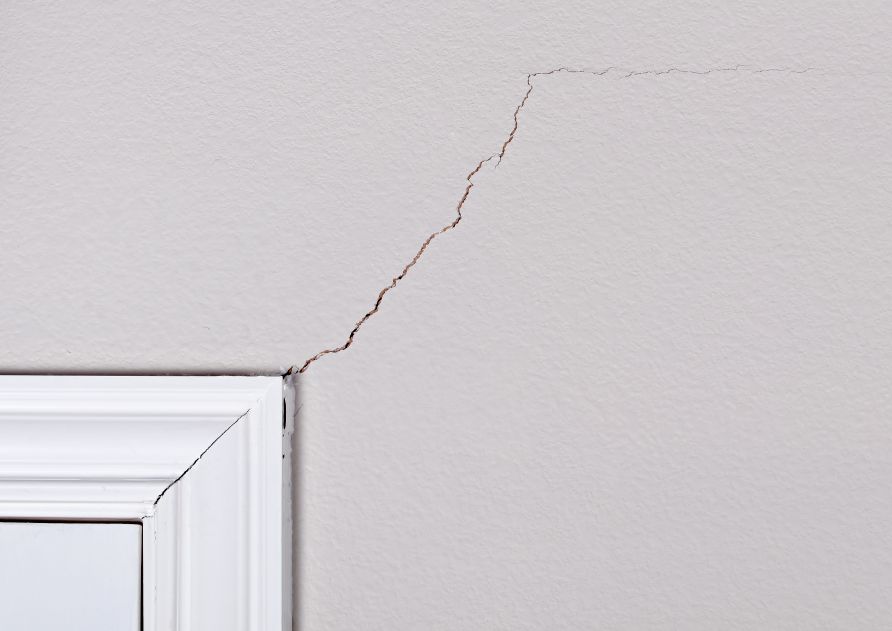Do drywall cracks indicate foundation problems?

When it comes to noticing drywall cracks in your home, the size and angle of these spaces can be very important to determine whether your home has foundation problems. You should also pay attention to cracks near windows and doors. But what exactly causes them? Below you'll find some answers to this question. Read on to learn more about the signs and causes of drywall cracks....and how to avoid them!
Size of cracks
Several types of foundation cracks can indicate the need for an inspection. A stair-step crack is the most significant, as it runs diagonally and affects brick and concrete foundations. This type of crack usually starts at the joint between two walls, and may extend across two levels. A diagonal crack is also a sign of structural movement. In addition to cracks in the drywall, other signs of foundation problems include uneven floor level and a noticeable hump.
Cracks that span more than a quarter-inch in width may be indicative of a foundation problem. Larger cracks are indicative of more serious issues. A crack one-quarter-inch or wider can cause significant damage to the wall. A crack that is observable in daylight can also be a sign of foundation damage. A crack that extends through multiple layers of paint may be a warning sign that foundation problems may be present.
Angle of cracks
One of the earliest signs of a potential foundation problem is the appearance of hairline drywall cracks. This is caused by differential settlement, which occurs when the soil beneath your foundation sinks deeper than the rest of the house. This results in uneven pressure on the foundation and causes the house to shift. As a result, the drywall may start to crack and the underlying structure to become soft and deteriorate.
Another sign of foundation problems is vertical cracks in the drywall. If a crack runs vertically, it likely means the foundation has moved. Horizontal cracks, on the other hand, are caused by soil pressure and should be addressed immediately. Fortunately, surface cracks can be repaired using drywall putty and sanding tools. If, however, the cracks become wider or longer, it's time to call a foundation repair company.
Cracks near windows and doors
If you notice cracks near windows and doors in your home, you might be worried about your home's foundation. Cracks in the foundation can result in warped door frames that make it impossible to lock the house. Cracks near windows and doors are also signs of foundation problems, as they can lead to spaces beneath or above windows when they're closed. Here are some other signs you should be aware of:
Another sign of foundation issues is if cracks are visible near doors and windows. You may not see them right away, but they can be obvious. Cracks in the corners of door and window frames may also be indicative of a foundation problem. Moreover, you might notice gaps between base molding and floor coverings if you notice cracks near doors and windows. Cracks in these areas should be evaluated by a qualified basement repair professional in order to determine the cause of the cracks.
What causes cracks in drywall?
One of the leading causes of cracks in drywall is natural wear and tear. This happens when tenants or clients move in and bump into corners. Cracked drywall will need to be replaced. If the crack is large, it may be necessary to hire a drywall repair service. In many cases, cracks can be repaired using mesh tape, caulking, or mesh patch kits. But if the crack is small, you can probably repair it yourself.
A number of other factors are also responsible for cracks in drywall. First of all, a home's foundation may be deteriorating. Especially if it's not climate controlled, the cracks in the drywall could be caused by climate change. Furthermore, houses experience settling during their lifetimes. When this happens, drywall can crack, and it can be detrimental to the structure of a house.
How to repair the cracks
When your home's drywall is cracked, it might be an indication that you have a foundation problem. You can either patch up the crack or replace it by doing the job yourself or hiring a drywall repair service. In the former case, you can do so by sanding and priming the area, and painting it. If the cracks are more than 5 millimeters in diameter, they are serious and indicate a foundation problem. The drywall may be dried out, or it could be caused by a leak.
A small crack in drywall might be caused by humidity or temperature. A larger crack could be caused by structural problems such as framing deterioration or foundation settlement. Once the foundation is repaired, you can then fix cosmetic cracks. Allied has a guide to repairing drywall cracks that indicate foundation problems. The first step is to make sure that the cracks are in the right place.
